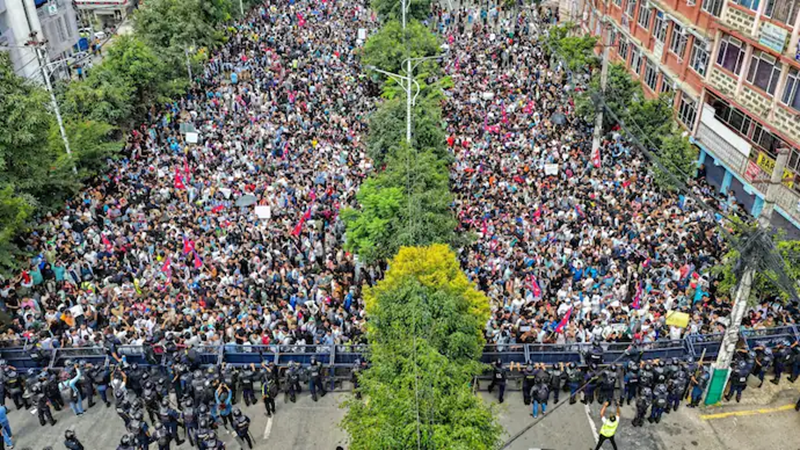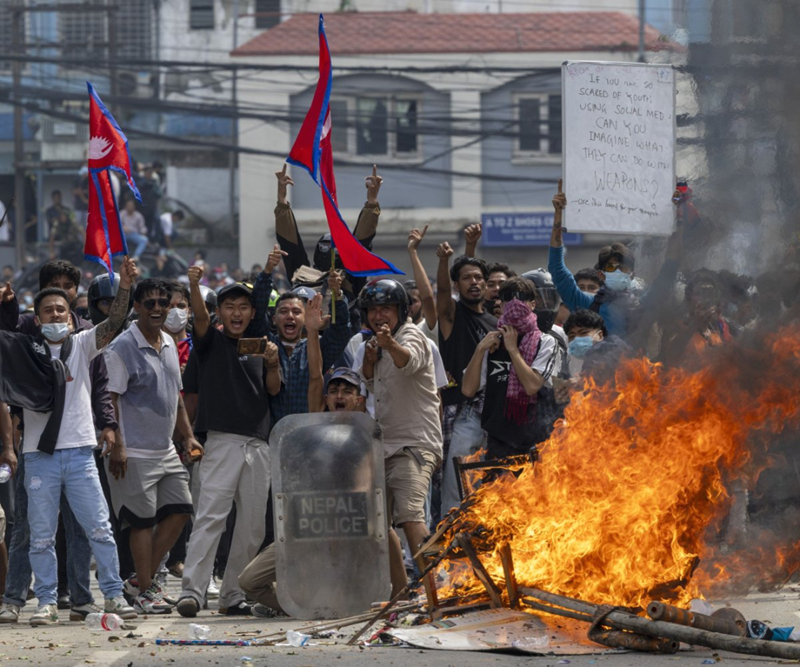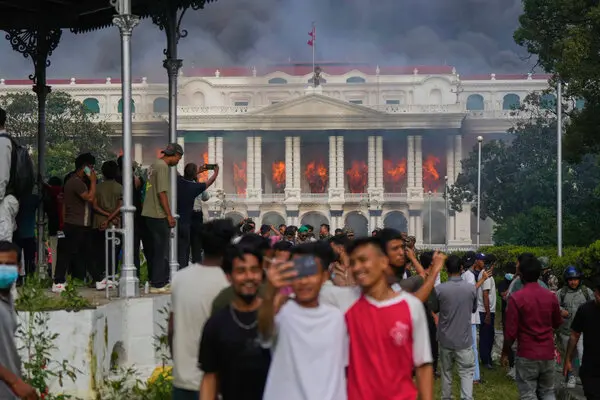Expert: Gen Z frustration with status quo underlies riot in Nepal
The Nepali government’s ban on social media platforms has triggered large-scale youth protests, and the situation in Kathmandu continues to deteriorate. On September 9 local time, protesters set fire to the house of Prime Minister KP Sharma Oli, who was forced to leave his residence on a military helicopter and subsequently resigned.
What are the underlying causes behind the unrest in Nepal? Have Chinese nationals in the country been affected? Our reporter with the "Southern Messengers" column of Mekong News Network just interviewed Yang Zezhou (Yang), a postdoctoral research fellow at the Asia Research Institute of the National University of Singapore.

A scene of the protest in Nepal
Q1: Nepal recently imposed a ban on social-media platforms but quickly revoked it. What are behind this contradictory move?
Yang: It reflects the inherent contradictions in Nepal’s national strategy.
On the one hand, Nepal brands itself as the "Silicon Valley of South Asia," promoting digital nomad visas and encouraging the development of asset-light and tech industries. It is also advancing its AI sector via existing AI companies. For example, one company plans to use AI technology to integrate the Nepali language, enabling mass messaging and digital AI conversations in Nepali. Previously, Nepal has also been tolerant of attracting foreign investment and developing tourism.
On the other hand, the government’s sudden ban on 26 overseas social media platforms, including WeChat, TikTok, and Facebook, was not a temporary measure but a continuation of its long-standing desire to control social platforms. However, the scale of the political turmoil it triggered this time was beyond expectations.
Although the recent violent clashes were incidental, they can be viewed within the broader context of the Nepali government’s ongoing efforts to strengthen state power in recent years.
Since the end of the monarchy in 2006, Nepal’s 2015 constitution established a federal system, but the country is still in a transitional period. The government has attempted to consolidate state power, and requiring foreign businesses and digital platforms to register and accept oversight is part of this effort.
From the Nepali government’s perspective, their requirement is sensible -- the foreign companies need only register and report, without additional costs or restructuring. However, the lack of active response from multinational corporations has been perceived by the Nepali government as a sign of disrespect.
Yet, the government’s desire to strengthen platform regulation is intertwined with the imbalanced domestic development in Nepal. The government failed to fully understand the public needs, leading to a miscalculation in the role of social platforms in people’s lives.

An emotional scene of the protest in Nepal
Q2: What impacts has the social-media ban had on Nepali society?
Yang: The impact of the ban goes far beyond freedom of speech.
Within Nepal, the ban first affected the entertainment and leisure lives of young people.
Secondly, Nepal has a large number of overseas migrant workers, many of whom are less educated and work hard abroad to earn a living. They heavily rely on social platforms for low-cost communication with their families, and the ban directly severed this channel of emotional connection.
At the same time, plenty of business communications between China and Nepal depend on WeChat. The ban forced businesses to seek alternative means of contacts.
Q3: What are the underlying causes for the outbreak of these protests?
Yang: The protests stem from young people’s dissatisfaction with long-standing structural issues in Nepal, including government corruption, employment difficulties, and the wealth gap.
Development opportunities are limited within Nepal. A small number of the wealthy occupy the vast majority of resources, leaving very few opportunities for the youth. This sense of frustration stands in sharp contrast to the elite class, making social platforms an outlet for societal discontent.
This incident is similar to the protest in Indonesia triggered by high salaries for officials, both representing outbursts of youth frustration over systemic injustice.
Additionally, social media are not only channels for communication among ordinary people but also platforms that break down social stratification. Many young people in Nepal rarely encounter the wealthy in their daily lives but are exposed to their displays of luxury and extravagance on social media. This is why the "Nepo kids" hashtag, satirizing the ostentatious behavior of wealthy heirs, frequently appeared during the protests.

The protesters set fire to a government building.
Q4: Have the Chinese nationals in Nepal been affected by the riot, and how has the Chinese community responded?
Yang: As far as I know, the daily lives of Chinese nationals in Nepal have not been severely impacted, but there is widespread concern about the turmoil.
Views within the Chinese community differ: Some sympathize with the protesters, while others suspect that foreign forces are behind the instigation of the protects.
Q5: What aspects of Nepal will you focus on in the future?
Yang: For the time being, my attention is paid to the upcoming political changes. For example, who will take over the position of Prime Minister Oli after his resignation, and how? What political shifts will occur within the Communist Party of Nepal and the Nepali Congress?
In the long run, I am more interested in the issue of imbalanced social development within Nepal, how Gen Z in the country use the technological means to convey their social concerns, and what cultural expressions they prefer in seeking their political identity.
Planning by Zhang Ruogu and Zu Hongbing; Reporting by Guo Yao; Trans-editing by Wang Shixue